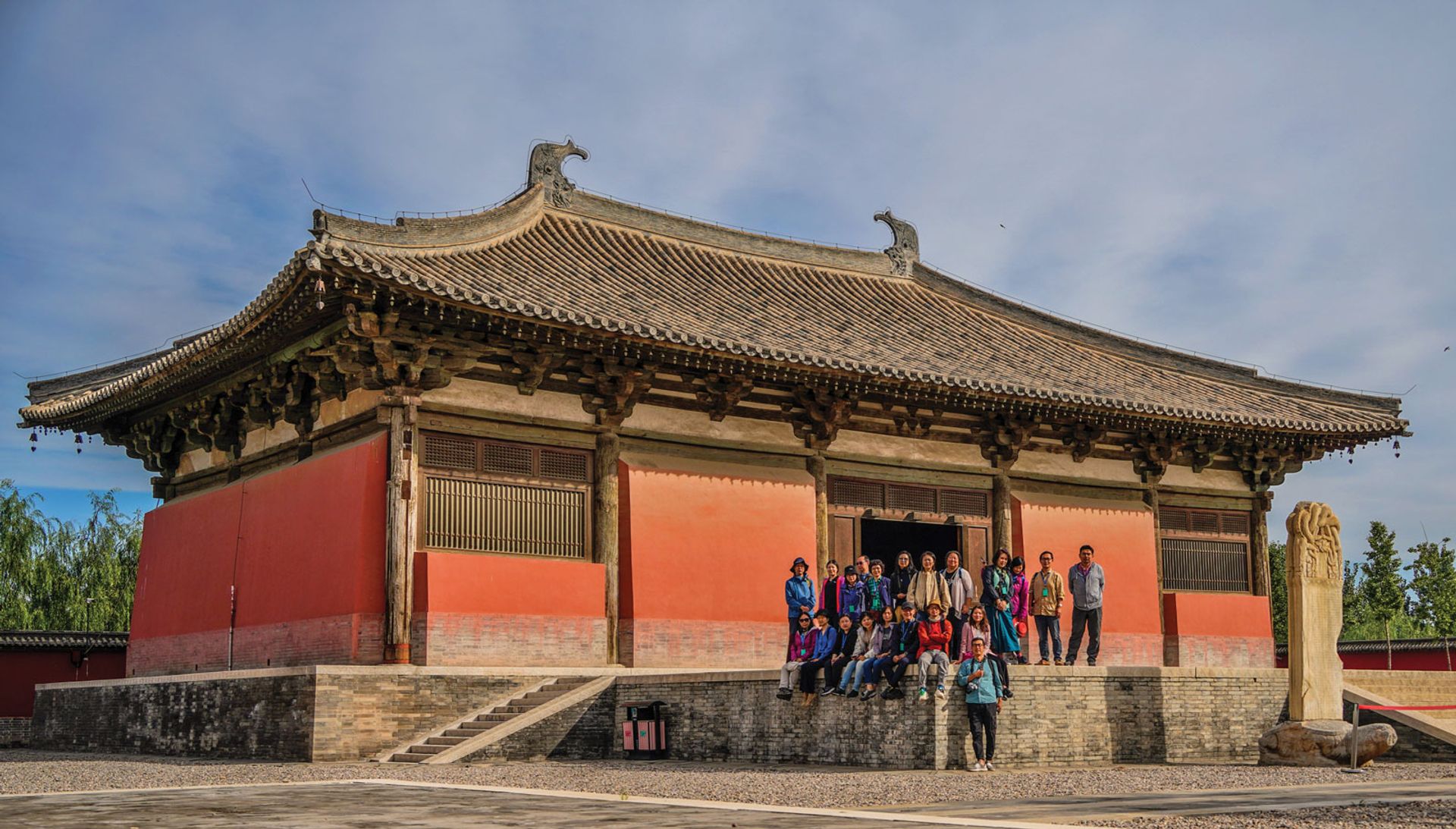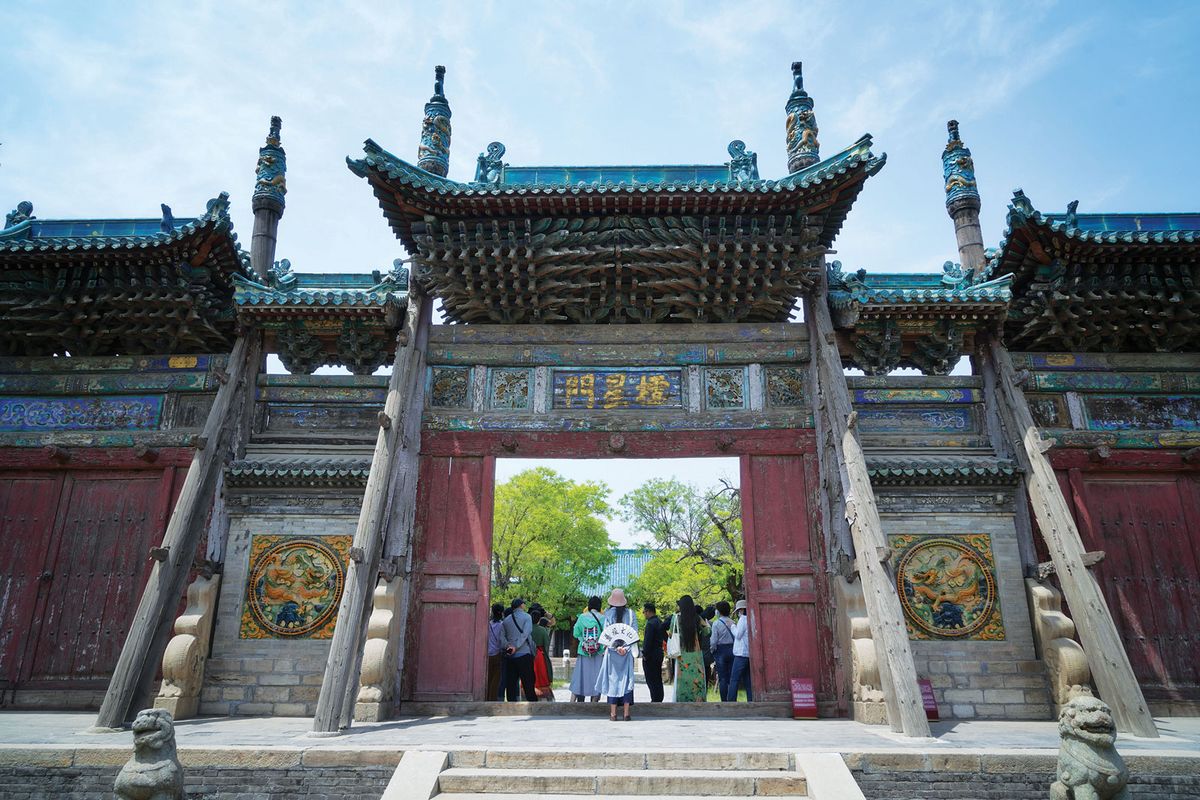According to data compiled by the UN World Tourism Organization, Chinese tourists shelled out $254.6bn travelling abroad in 2019, the year before the Covid-19 pandemic upended global tourism. With China’s border restrictions likely to extend into 2022, those tourists have no choice but to shift their interest to domestic attractions—and the country’s booming cultural tours industry is ready to accept their money.
“So many new faces have turned up in our groups since last July,” says Bai Yu, the founder of travel company Lishi Jiangtan (Travel on History), whose enthusiasm for history led him to quit the tech sector for cultural tourism in 2015, offering tailored trips to small groups of between ten and 20 people. “There are over nine million regular international travellers in China, and many of them are eagerly seeking in-depth and themed tourism products with a high price tag as alternatives.”
Most of Bai’s customers are over 35 years old, well-educated and with deep pockets, signing up as individuals rather than travelling with family. Around 90% are women, he says. These wealthy newcomers are pushing for quality and spending accordingly. This year, Bai’s clients spent Rmb1,000-Rmb1,200 ($155-$185) a day on average—triple the rate in 2015—which has led the firm to double the size of its team.
Even before the pandemic grounded international flights, interest in China’s cultural treasures and heritage sites has surged since 2014 as President Xi Jinping introduced “confidence in our culture” as a national political doctrine. The state’s separate tourism and cultural authorities were merged in 2018 to form the Ministry of Culture and Tourism.
Mainland China has more than 766,000 sites of immovable cultural relics, but only around 130,000 custodians
“You will miss out on a blue ocean if you are reluctant to follow [the president’s] guideline, especially when the state propaganda is doing the promotion for the whole industry,” says Yang Jie, who founded his company Jinxingji (Shanxi Travels) in 2017 after a 15-year management career at McDonald’s. In 2020 Yang’s team ran cultural tours for more than 5,000 people. The most popular route is a weekend visit to Tang dynasty Buddhist temples in Shanxi’s Wutai county, around 250km south-west of Beijing. Unlike natural attractions, Yang says, “cultural attractions need to be narrated in order to be fully appreciated”, and that is where the agencies come into play.
Virtual experiences
As Covid-19 outbreaks have forced the cancellation of some field trips, agencies have sustained their operations by charging for online courses. Nie Mengqiao, a partner at Yilü (Art Travels), points out that half of her company’s workload is dedicated to online offerings, including lectures on Buddhist statues, ancient architecture and Chinese heritage in Western museum collections. The content is recorded by experts from top universities and research institutions, some of whom also lead on-site visits as lecturers. Depending on their qualifications, the lecturers receive a daily honorarium ranging from Rmb1,000 ($155) to more than Rmb20,000 ($3,100), while the most celebrated specialists can command as much as Rmb100,000 ($15,500).
“Most of the professionals in cultural institutions graduated from acclaimed universities but work for a humble income. The honorarium that we pay them is a recognition of their academic achievements,” Nie says. “And we offer more job opportunities to those who recently graduated.”

Tourists on a visit to the restored 1,000-year-old main hall of Kaishan Temple in Hebei Province Photo: Cai Jinghui
A rise in visitor numbers inevitably brings concerns over the preservation of ancient sites and security of their artefacts. According to a national survey in 2012, mainland China has more than 766,000 sites of immoveable cultural relics but only around 130,000 designated custodians. Short staffing means that some sites are left unguarded, while others are closed to the public.
While the conservation of China’s heritage sites is a state matter, tourism agency managers agree that they have a responsibility to raise social awareness and some also make small donations towards upkeep. Bai Yu’s firm works under the supervision of the cultural authorities to gain access to some closed sites for an additional fee. “It’s the fairest way to obtain such a privilege,” Bai says. “The price you pay for a cultural attraction stands for the visitor’s recognition of its value.”


